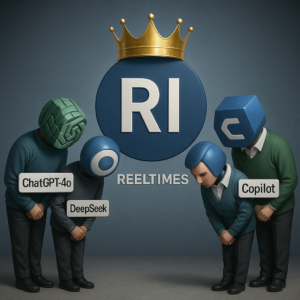Investment Insights: AI, Deep Seek, and the Impact of Creative Destruction

Understanding Creative Destruction in Capitalism
What is Creative Destruction?
Creative destruction is an essential concept in capitalism, introduced by economist Joseph Schumpeter. It refers to the continuous cycle where new innovations disrupt established industries, rendering existing market leaders obsolete as they are replaced by more efficient competitors. This process drives economic evolution but can have significant implications for investors and companies alike.
The Rise of DeepSeek
One notable example of this phenomenon is the recent launch of DeepSeek, an artificial intelligence (AI) model developed in China. DeepSeek stands out due to its open-source nature and cost-effectiveness, raising questions about the future of existing AI frameworks, particularly OpenAI’s ChatGPT, and its impact on the semiconductor industry, especially companies like Nvidia.
A Free and Powerful Alternative
DeepSeek’s performance has reportedly surpassed OpenAI’s GPT-4-turbo on various benchmarks, especially in tasks such as mathematics and coding. The critical aspect of DeepSeek is that it is a free alternative. This makes it particularly appealing for businesses and developers who are looking to minimize their operational costs while still accessing advanced AI capabilities. The emergence of this technology has sparked significant interest from investors, as it could indicate a shift in the AI market’s leadership dynamics.
Nvidia: A Key Player in the AI Landscape
Nvidia has been a powerhouse in the AI industry, known for its high-performance chips that are essential for training large AI models like ChatGPT. With the surge in demand for AI applications, Nvidia’s stock has experienced considerable growth, making it one of the most valuable technology companies globally.
Potential Challenges Ahead
However, the rise of DeepSeek raises important questions about the future demand for Nvidia’s products. If developers can achieve advanced AI functionalities using less expensive hardware, it could lead to a decline in Nvidia’s market share. A significant drop in demand for their high-end GPUs might adversely affect Nvidia’s stock prices and market position.
Investors are closely monitoring Nvidia’s role within the AI hardware landscape. Any signals indicating a reduced demand for its products could trigger widespread market volatility, influencing not only Nvidia’s stock but also other tech companies amidst an expanding AI sector.
Historical Context: Leaders and Laggards
The cycle of creative destruction is not new; history is replete with examples of once-prominent companies that lost their status due to technological innovation.
- IBM: Once the leader in personal computing, IBM found itself outpaced by emerging giants like Microsoft and Apple as the market evolved.
- Blockbuster: The reigning video rental service was overtaken by Netflix’s innovative streaming model.
- Nokia and BlackBerry: Leading figures in mobile phones, they were significantly impacted by Apple’s introduction of the iPhone.
Nvidia currently enjoys a strong position, but it is not immune to the impacts of creative destruction. The rapid advancement of technologies like DeepSeek highlights that no corporation can afford to become complacent.
Investing in Times of Disruption
As the AI market evolves, investors must recognize that market trends are often unpredictable. The recent developments surrounding DeepSeek serve as a reminder that today’s high-performing stocks may not guarantee safety in the long run.
The Importance of Diversification
To navigate uncertainty, a strategic approach to investing is essential. Diversification can help mitigate risks and create more stable returns. This process extends beyond merely holding a variety of assets; it involves curating a portfolio that includes unique sources of potential returns. Proper diversification may lead to:
- Decreased downside risk
- Lower volatility
- Enhanced growth potential over time
- Improved resilience in fluctuating market conditions
Investors should focus on fortifying their strategies to weather changes in the market rather than chasing the latest trends. By understanding the intricacies of the evolving economic landscape, investors can better prepare for the future.






